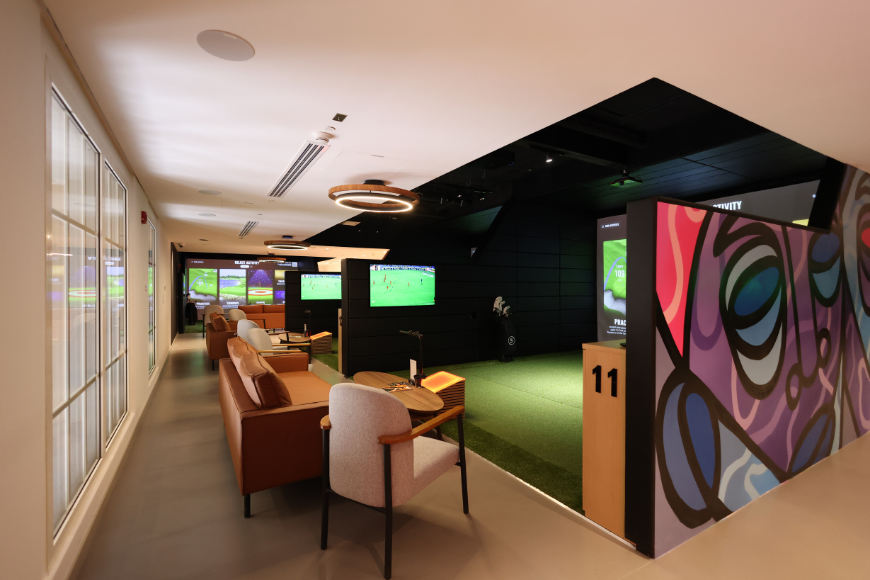We all have a feature that makes us feel a bit self-conscious, but when that feature is as prominent as our ears, it can really take a toll on our self-esteem
6 May 2019
| Last updated on 1 September 2020
If you’re uncomfortable with the shape, positioning or protrusion of your ears, the solution may be much less complicated than you think!
Few surgical procedures are as satisfying to patients as ear pinning or reshaping surgery, known as Otoplasty. It involves correction of protruding ears that stick out too far from the head. Having protruding ears will rarely affect a person’s hearing but will frequently cause embarrassment and psychological distress.
Ears are one of the first parts of the body to develop to full adult size, so if they protrude, they can be particularly noticeable in children, and this regularly leads to teasing or bullying. Indeed the fear of their child being bullied will often result in the parents being even more concerned than the child. Otoplasty is almost always successful in correcting this deformity and has a positive psychological impact not only on children but also on their parents!
Adults with protruding ears can also experience low self-esteem or practical issues such as wearing certain types of head attire or hairstyles.
In this article we share 5 Things You should know If You are Considering Otoplasty. These do not replace the necessity of a one to one, thorough consultation with a qualified and experienced plastic surgeon, but it should help you to decide whether it is time to take that first step of booking a consultation.
Having more information and a clear expectation about what’s next will help you make an informed decision and to better manage your post-op recovery so that you have the best possible experience out of your surgery.
You might also be interested in:
- The Secret Behind Achieving a Natural Look
- Dr Riccardo Frati at Elite Plastic & Cosmetic Surgery Group
- Treat Skin Laxity and Poor Skin Texture with PROFHILO
- 5 Things What You Should Know About Breast Implants
- Breast Augmentation Q & A with Dr Allen Rezai
- 5 Things You Should Know When Considering Lip Fillers
- 5 Things You Should Know About Size, Shape & Profile of Breast Implants
- 5 Things to Know About Botox for Axillary Hyperhidrosis
- Review: Vampire Facial
1. Causes & Solutions for Protruding / Prominent Ears

Protruding ears may be hereditary, but this is not always the case. The normal outer ear will project from the side of the head at an angle of about 20 to 35 degrees. However, in about 5% of the general population, this angle is more than 35 degrees, resulting in the appearance of overt protrusion.
This occurs for a number of reasons:
- Overdevelopment of the Cartilage – There is too much cartilage making the Ear to protrude or be prominent.
- Underdevelopment of the Cartilage - The ridge of cartilage at the top of the ear does not fold properly as it develops resulting in ears that “Stick Out”.
- Injury - It can also result from an injury to the ear.
Whilst prominent ears usually occur on both sides, occasionally the problem may affect only one ear. However, both ears may have to be operated for the best possible balance.
There are various solutions available to correct protruding ears. If the problem is identified shortly after birth, then the condition can be treated conservatively, simply by applying an appropriate splint, this technique is called Ear Splinting.
However, only a few months later, the cartilage of the ear will have become considerably stiffer and the splint may need to be in place for many months, even then not always guaranteeing success. Typically, after the age of six months, the only viable option is surgical correction.
2. Benefits of Otoplasty / Ear Surgery

Otoplasty is one of few cosmetic procedures performed on Children. By the age of about five or six years, the outer ear, known medically as the pinna, has attained around 85% of its adult height and most surgeons recommend waiting until this time to correct prominent ears. However, many parents are keen to have the ear correction carried out as early as possible, fearing that their child will be stigmatised at school.
Nevertheless, it is generally more prudent to wait until the child actually mentions the problem, at which time the effects of ear reshaping surgery on a child's self-image is generally immediate and significant.
In addition to improving one’s self-esteem and making the individual feeling better about his/her appearance, Otoplasty also provides dramatic results with No visible scarring, short recovery period and it is also one of the safest facial surgical procedures.
You might also be interested in:
- 5 Things You Should Know Before Getting Eyelid Surgery
- Create Proportion HA Buttock Enhancement Injections
- Natural Looking Lips with Dr Allen Rezai
- Tuberous Breast Correction – Q&A with Dr Allen Rezai
- 5 Things You Should Know Before Getting a Skin Peel
- 5 Things to Know Before Getting Breast Reduction Surgery
- 5 Things You Should Know Before Getting Cosmetic Surgery
- The Choice of Breast Reconstruction and FAQ with Dr Allen Rezai
- Review: Botox For Excessive Sweating
- Review: ZO Facials in Dubai
3. What is Involved in Otoplasty / Ear Surgery?
The procedure for otoplasty surgery in adults is typically performed under either local anaesthesia alone, or local anaesthesia with sedation. In the case of children, a general anaesthetic is usually administered.
The procedure generally involves:
- Making a small incision, hidden behind the ear, in the groove between the ear and the side of the head, to expose the ear cartilage.
- Removing small pieces of cartilage if necessary.
- Scoring, folding and stitching the remaining structure into the desired shape and position.
If the ear lobe is also large, then it is possible to reduce its size during the same operation. The surgery itself takes about 45 minutes to 2 hours, depending on the skill and experience of the Surgeon.
A thorough consultation is necessary to determine your suitability and discuss treatment options, as every case is different.
4. Ear Surgery Recovery Period & Results

Most patients will experience tender ears for several weeks following their surgery. The primary goal during the recovery period is to support the ears so the cartilage can strengthen. Normally a pressure-type dressing is placed over the ears for 24 to 48 hours which is then replaced with a smaller dressing or a headband.
At about one week post-op the sutures are removed as needed, and we recommend that the patient wears a protective headband or bandage when sleeping for the next 2-3 weeks, so as to avoid the ears being bent forward against the pillow.
The natural folds and swelling should resolve over one to two weeks. While patients can normally return to work within a week, they should avoid activities that could cause trauma or injury to the ears during the recovery period. Physical contact sports, such as judo, rugby, or football should be avoided for at least 3 months. Swimming should be avoided for up to 8 weeks after surgery.
Otoplasty has one of the highest patient satisfaction rates in cosmetic surgery. For most patients the results of their ear surgery are permanent. However, in a few cases, minor adjustment surgery may be required. It is important to understand that no two ears are made exactly the same. This means that, while the aim with surgery is to make both ears similar to each other in size and projection, the contours will always be different and that achieving perfect symmetry is impossible.
You might also be interested in:
- Want to reverse effects of Fillers? Read This Article…
- Have You Heard Of Gynecomastia Surgery?
- Facelift Surgery, Is It Right For You?
- Rhinoplasty Q & A with Dr Allen Rezai
- What is Chin Implant Surgery?
- PRP Therapy – The Preferred Treatment
- How to Prepare for Laser Hair Removal
- Expat Woman Review of The Perfect Peel
- A Bespoke approach to Eye Rejuvenation
- Laser Hair Removal – Read & Watch Tory’s Experience
5. Check-List To Consider When Contemplating Otoplasty

To conclude, here is a check-list of what we believe to be the most important considerations to be taken into account when contemplating any Ear Surgery in Dubai:
- Think about the change you want to see, then research and find out as much information as possible about the treatment, being precise about what you want and, above all, be open to all your wishes not being achievable.
- Find a qualified plastic surgeon experienced in Ear Surgery, making sure that he or she is board certified. Also, look for “genuine” reviews and feedback from previous patients.
- Have consultations with at least 2 or 3 qualified and experienced plastic surgeons, just to have something to compare and cross-check.
- Be honest about your medical history and discuss all aspects of the surgery with the plastic surgeon. Do not be afraid to ask questions, since it is important to know the risks involved and feel comfortable with the person who will be carrying out the surgery.
- The plastic surgeon should be able to explain why he/she recommends a certain type of treatment option or technique, as with all cosmetic surgery, the type of technique used depends on many factors involving the patient’s indication for treatment, anatomy and lifestyle, and a treatment plan should be tailored to suit the specific needs of the patient.
- Find out what type of care is offered Before, During, and especially After the surgery as after-care can be just as important as the surgery itself. So make sure you know who to contact and how you will be looked after, especially if there are any complications or problems following your surgery.
- Find out where the surgery is performed, as this can have major implications on safety during the operation and the occurrence of possible risks and complications.
- Last but not least, “COOL OFF” before you Commit. Cosmetic Surgery should not be taken lightly, as it is after all surgery. Take your time and reflect on all aspects of the Ear Surgery procedure, and make sure you understand all the implications involved before you make an informed decision to proceed.
For more information regarding Ear Surgery and other types of facial procedures or to book a Consultation with one of our Consultant Plastic & Reconstructive Surgeons, Dr Allen Rezai or Dr Riccardo Frati visit our website. or call +971 4 431 2396.



.png?itok=HBSyMDok)










































































.png)
























.png?itok=0fOAXkOm)

























.png?itok=EH_x0Pha)


